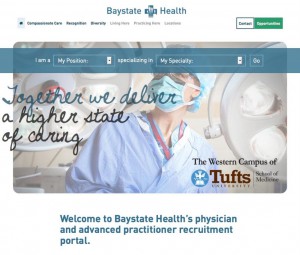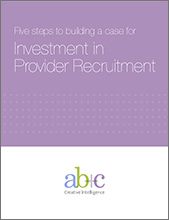In today’s competitive job market, where we are still seeing an unemployment rate lower than 4%, attracting and retaining top talent is becoming a top concern for organizations looking to thrive and grow.
The research is in, and employee advocacy is more important than ever. Both Millennials and Gen Z have a significant distrust of advertising, but they trust and appreciate reviews. As organizations strive for future hiring success, one key aspect that can set yours apart is a workplace culture that employees are so proud to be part of they naturally want to spread the word. A positive and inclusive culture not only boosts employee morale but also fosters employee advocacy. When your team is proud to be a part of your organization, they become powerful advocates, helping attract new talent and enhancing your brand. Sounds great, right? But how do you get there?
Start by taking a closer look at your culture and focus on providing the resources that will help strengthen employee advocacy. Here are 10 tips to guide you:
Tip 1 – Define Your Core Values:
Clearly articulate and communicate your organization’s core values. Make sure employees understand how these values guide decision-making and shape the company’s identity. More importantly, help your team members understand exactly how they, and the work they do, align with these values. When there’s alignment, your team is more likely to become passionate advocates for your brand.
Tip 2 – Invest in Employee Development:
Today, employees want to know there are professional development and growth opportunities. They want to know their employers see value in their professional growth and are offering continuous learning opportunities and professional development programs. When employees feel an organization is invested in their growth they are more likely to be engaged, and engaged employees 2.5x more likely to advocate for their company. While a LOT of companies provide these options for their team, this is an opportunity to put a spotlight on how your offerings differ, just as importantly, celebrate our team members’ success when they achieve their development goals.
Tip 3 – Ask Hard Questions:
We all know some of the things that help to create a positive work environment: encouraging open communication, celebrating achievements, and addressing concerns promptly. But do we understand where we stand honestly in these critical areas of importance? Sometimes getting to the truth of a situation requires asking team members the hard questions, like “Where are we falling short of your expectations?” or “Have you ever referred a friend or colleague for employment?” Asking the right questions, being honest about what was heard, and communicating how the organization is willing to change will build loyalty and a sense of being heard, leading to advocacy.
Tip 4 – Recognition and Rewards Programs:
We know the importance and value associated with employees who feel valued at work. Employees who are recognized for their achievements are significantly more engaged and are motivated to do their best. As we take the time to congratulate and thank our teams and to acknowledge their contributions, they will take the time to advocate on behalf of the team that sees their value. The amazing thing? It doesn’t always have to be a financial reward or a big announcement. For example, here at Aloysius Butler & Clark, one of our most popular Zoom channels is the “Kudos” chat. It’s where we celebrate and recognize one another, letting our fellow team members know their contributions are seen and appreciated. A culture of appreciation is a culture that team members are willing to advocate for.
Tip 5 – Encourage Employee Feedback:
Providing opportunities for employees to provide suggestions and insights is an important factor in them feeling heard. Establish channels for regular feedback from employees. Gen Z and Millennials have grown up receiving real-time feedback on their activities, such as video games that provide immediate rewards for specific activities or sharing information on their social platforms and receiving comments or likes. Actively listen to their suggestions and concerns and demonstrate a commitment to improvement. When employees see their input making a difference, they become more invested in the success of the organization.
Tip 6 – Promote Work-Life Balance:
If we want team members to value the organization, then the organization needs to value the things that are important to them. It is becoming clear that a top priority for employees is work-life balance. It’s critically important that we support work-life balance initiatives to ensure employees can maintain a healthy equilibrium between professional and personal life. It’s not enough to just approve vacation requests. We need to monitor our teams and address issues of people pushing too hard and potentially burning out. We need to encourage turning off email and telling team members you won’t be available when you are on vacation or after hours. This demonstrates a commitment to employee well-being, fostering a positive culture.
Tip 7 – Provide Opportunities for Social Interaction:
Foster social interactions within the organization through team-building activities, events, and community service projects. Positive relationships among employees contribute to a strong sense of camaraderie and community. Did your team gather and work on a community benefit project? Great! Thank team members for being involved and share the photos and/or videos! Encourage them to share their thoughts on why the event was so important to them through their own social channels. If we want team members to advocate on our behalf and to share our great work culture, be sure to provide them with the support to do it.
Tip 8 – Flexible Work Options:
Offer flexible work arrangements when possible. This could include remote work options or flexible hours. Sometimes it’s as easy as allowing a team member to start their day an hour earlier so they can leave to watch their child’s recital or sporting event. It may be allowing a team member to use sick time to take a parent or loved one to a doctor’s appointment. Providing flexibility shows trust in your employees and demonstrates you value their contributions enough to work around the things in their life that are important to them. When employees feel valued, they in turn see value in the organization.
Tip 9 – Transparent Communication:
Honesty and transparency matter. No one likes to feel like information is being withheld or that they can’t trust the leadership of an organization. Maintaining transparency about company goals, challenges, and successes is critical. When employees are informed and feel connected to the company’s vision, they are more likely to push to help resolve challenges and to understand when difficult decisions are having to be made. According to Bill Higgs, “All problems are communication problems.” While sometimes news is harder to provide and may require more perspective on what it means, having a culture where employees can trust what is being communicated is a big win.
Tip 10 – Support Employee Well-being:
Prioritize employee well-being by offering wellness programs, mental health resources, and other initiatives that promote a healthy work-life balance. We’ve all been through a lot over the past several years—COVID-19, heightened political tensions, terror threats, rising tensions associated with social injustice, etc. It’s never been more important for team members to feel supported through these and future challenges.
I get it, that’s a LOT to focus on and all these elements are critically important to building a culture that employees would want to advocate on behalf of. But the most important thing is the first step. What are the quick wins that you and your team can influence and get started on right away? Take the first step … and communicate it. Hold yourself accountable to your team and start down the path. Employee advocacy is a powerful tool in attracting and retaining top talent, ultimately contributing to the long-term success of the business. It’s worth the investment.

















